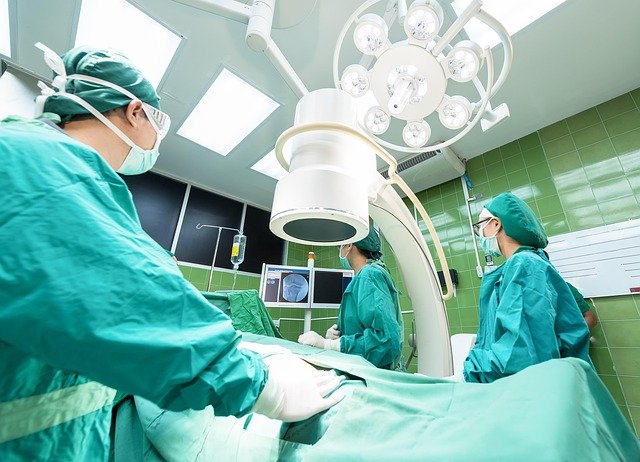Abdominoplasty Explained: Benefits, Risks & Recovery
Considering a tummy tuck (abdominoplasty)? This in-depth guide walks you through how the surgery reshapes the abdomen, who typically benefits, common complications, the recovery timeline, and expected costs. Get clear, practical information on surgery, healing, and long-term results to help you decide if abdominoplasty is right for you.

Abdominoplasty Explained: Benefits, Risks & Recovery
A tummy tuck, clinically known as abdominoplasty, is a surgical procedure designed to remove excess abdominal skin and fat while repairing weakened or separated abdominal muscles. Frequently chosen after pregnancy or significant weight loss, this operation can produce a flatter, firmer midsection and improve body contours. The following overview describes how the surgery is performed, the risks involved, recovery expectations, cost factors, and how to preserve results long term.
How the surgery is carried out
In a full or traditional abdominoplasty, the surgeon typically makes a horizontal incision low on the abdomen, placed so it sits under underwear or swimsuit lines. Through this opening, excess skin and fat are removed, and the underlying rectus muscles are brought together and sutured to tighten the abdominal wall. The remaining skin is redraped and the incision is closed with sutures. Liposuction is often used alongside the tummy tuck to refine contours and remove additional fatty deposits.
There are several variations based on patient needs: a mini tummy tuck uses a shorter incision and focuses on the lower abdomen, while extended or fleur-de-lis techniques address larger areas of excess tissue and may include additional incision patterns. The exact approach depends on the amount and distribution of skin laxity and the presence of muscle separation.
Potential risks and complications
Abdominoplasty is major surgery, so it carries risks similar to other operations. Possible complications include:
- Infection
- Excessive bleeding or hematoma
- Delayed wound healing or wound separation
- Noticeable or hypertrophic scarring
- Seroma, which is a fluid collection under the skin
- Numbness or altered sensation near the incision
- Asymmetry or contour irregularities
- Deep vein thrombosis and pulmonary embolism
- Reactions or complications related to anesthesia
A thorough preoperative assessment helps reduce risk. Surgeons will usually advise patients to optimize their general health, stop smoking well before surgery, and follow pre- and post-operative instructions closely to lower the chance of complications.
Recovery: typical timeline and what to expect
Recovery varies by individual and the extent of the procedure, but generally follows these stages:
- Immediate post-op: Patients can expect soreness, swelling, and discomfort controlled with prescribed pain medication. Early, gentle movement is encouraged to lower the risk of blood clots.
- First days to week: Swelling and bruising peak in the early period. Small drains may be placed to remove excess fluid and are usually removed within several days to a week. Compression garments help support healing tissues and limit swelling.
- Weeks 1–3: Activity is limited; patients should avoid bending, lifting heavy objects, and vigorous exercise. Many people return to light daily tasks within one to two weeks, but caution is still necessary.
- Weeks 4–6: Most patients can gradually increase activity and return to more normal routines. Strenuous exercise and heavy lifting should still be avoided until cleared by the surgeon.
- Months: Swelling can persist for several months, and scars will continue to mature and fade over a year or more. The final contour and firmness typically become evident after several months of healing.
Strict adherence to the surgeon’s wound care instructions, activity limits, and scheduled follow-up visits is essential for the best outcome.
Cost considerations
The total cost of a tummy tuck depends on location, the surgeon’s expertise, facility fees, anesthesia charges, and whether additional procedures like liposuction are included. Below is a general range from various sources:
| Provider | Location | Estimated Cost Range |
|---|---|---|
| American Society of Plastic Surgeons | United States | $6,000 - $12,000 |
| RealSelf | United States | $8,275 - $12,000 |
| Transform Hospital Group | United Kingdom | £6,495 - £7,995 |
| Toronto Cosmetic Surgery Institute | Canada | CAD $9,999 - $12,999 |
| Cosmed Clinic | Mexico | $4,800 - $8,500 |
Prices are estimates and may not include anesthesia fees, operating room costs, medications, post-operative garments, or follow-up care. Confirm the full breakdown of charges and what is covered with your provider before scheduling surgery.
Most insurers consider tummy tucks cosmetic and do not cover them unless there is a documented medical necessity, such as large hernia repair or recurrent skin infections related to excess tissue. Always verify coverage with your insurance company.
How long results last and how to maintain them
Abdominoplasty produces durable improvements to abdominal shape, but results are most long-lasting when patients maintain a stable weight and healthy lifestyle. Significant weight fluctuations, future pregnancies, and the effects of aging can change the surgical outcome. A balanced diet, regular exercise, and avoiding major weight shifts help preserve contour and firmness.
Choosing a surgeon and next steps
Selecting a qualified, board-certified plastic surgeon experienced in abdominoplasty is crucial. During a detailed consultation, expect the surgeon to evaluate your medical history, discuss realistic outcomes, recommend the most suitable technique, and explain pre- and post-operative preparations. Ask to see before-and-after photos, request references, and ensure the surgical facility is accredited.
A tummy tuck is a major decision that requires careful thought, realistic expectations, and proper preparation. A comprehensive consultation with a trusted surgeon will help determine if the procedure is appropriate for your goals and how best to prepare for surgery and recovery.
This article is for informational purposes only and should not be considered medical advice. Please consult a qualified healthcare professional for personalized guidance and treatment.






